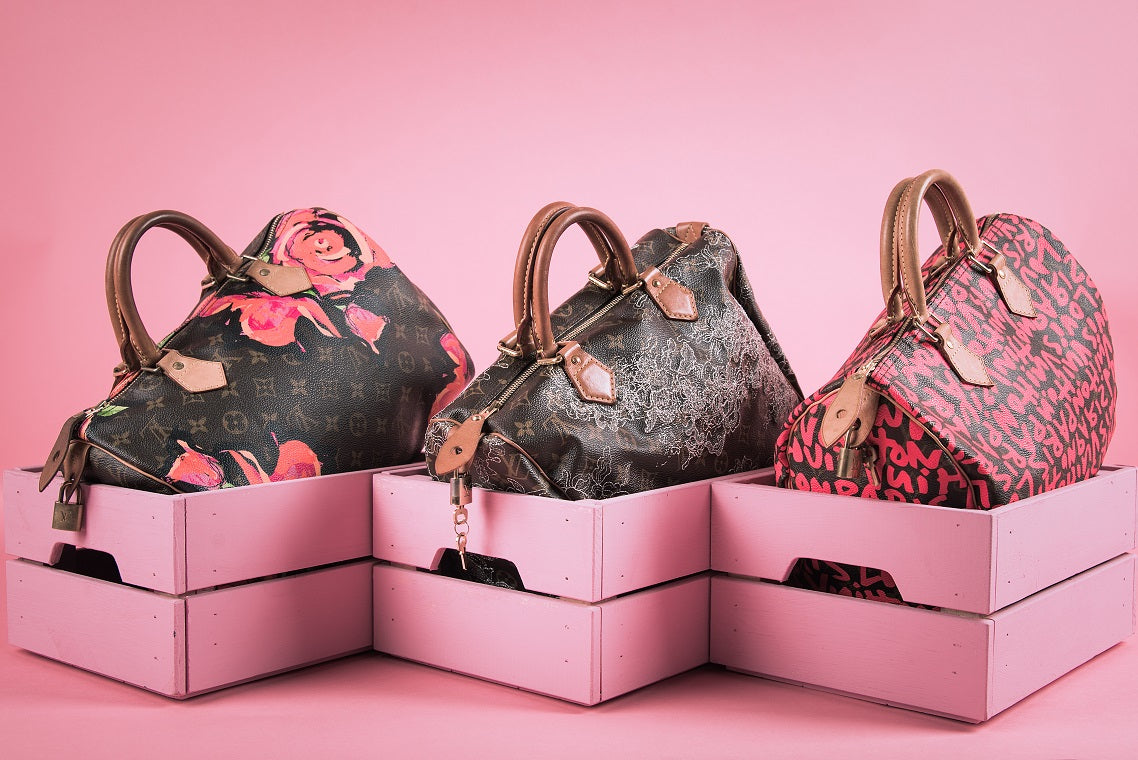
When it comes to accessories made from leather, we mostly think of materials such as cowhide, lamb leather, and goat skin. However, another type of leather that doesn't get as much attention is pigskin leather. In this blog post, we will go over everything you need to know about pigskin leather, including its uses, care instructions, and more.
What Is Pigskin Leather?
Pigskin leather is simply leather made from the skin of pigs. It's a tough, durable material that is often used for clothing, footwear, and accessories. Pigskin leather is commonly used for work gloves thanks to its durability and abrasion resistance.
In terms of appearance, pigskin leather has a distinctive look. It is known for its natural grain pattern, which can vary from fine to coarse, adding texture and visual interest to bags and accessories. The grain is typically more pronounced compared to other types of leather, giving the material a slightly rugged and textured appearance.
Additionally, pigskin leather is usually softer to the touch, providing a luxurious and comfortable feel when used in bags and accessories. Despite its softness, pigskin leather is also durable over time, making it suitable for items that require both style and resilience[1].
Is Football Made of Pigskin?
Interestingly, the footballs used in professional football games are made from cowhide leather, not pigskin leather. "Pigskin" is just a nickname for the ball, which would originally have been made from the skin of a pig.
Football is often referred to as "pigskin" due to the original materials used in making a football, which was a pig's bladder. As technology evolved, the bladder was replaced with a rubber balloon, but the name stuck.
What Is Pigskin Used For?
Pigskin leather can be used for a wide variety of products, including shoes, wallets, handbags, gloves, and jackets. Pigskin suede is used for upholstery, and it's also found in the manufacturing of specialty papers, such as absorbent tissues.
Where to Buy Pigskin?
You can often find pigskin leather products in specialty leather stores or online. Some popular brands, such as Gucci, offer pigskin bags and other accessories. However, if you're looking to buy pigskin directly, you may need to check with your local tannery to see if they offer pigskin hides for sale.
How to Clean Pigskin Leather and Suede?
Cleaning pigskin leather can be a bit tricky, but it's doable. Begin by wiping off any dirt or debris with a dry cloth. Then, using your fingers or a soft brush, rub a small amount of water and mild soap into the leather. Once finished, you can dry the leather using a towel or let it air dry. Always avoid submerging pigskin leather in water, as this can cause the material to shrink and warp.
Who Invented Pigskin?
Pigskin is not an invention per se, but rather a byproduct of using all parts of an animal. The use of pigskin has been around for thousands of years, as it was a common material in making shoes and clothing in ancient China, Greece, and Rome.
How to Care for Pigskin Leather?
Caring for pigskin leather involves a few simple steps. If the leather becomes wet, let it air dry, and avoid exposing it to direct sunlight or heat. Always protect pigskin leather from oil and grease, and avoid using harsh chemicals when cleaning. It's important to store pigskin leather products in a cool, dry place and use a leather conditioner to keep the material soft and supple.
Is Pigskin leather good?
Pigskin leather is considered to be a good leather option for certain applications. One of its advantages is its durability. Although pigskin leather is thinner than cowhide leather, it is known for being fairly thin and yet very durable. It is often used as a lining material in fine leather goods due to its durability and strength. In addition, pig leather has dense fibers, making it wear-resistant and suitable for heavy-use interiors or light garments, such as gloves or sneakers
However, it's important to note that the quality and characteristics of pigskin leather may vary depending on the specific tanning process and treatment it undergoes. It is always recommended to consider the intended use of the leather and consult with a knowledgeable leather professional to ensure it meets your specific requirements.
Brands that used pigskin leather
Below are some notable examples, keeping in mind that product offerings and material sources can vary over time.
Footwear Brands
Clarks
Clarks, a well-known British footwear brand, has occasionally used pigskin leather in the linings and uppers of their shoes. The use of pigskin helps enhance the durability and comfort of the footwear. Clarks has been in the shoe business since 1825 and is recognized for its commitment to quality and comfort.
Nike
Nike, the global sportswear giant, has also incorporated pigskin leather in some of its products. In the early days, certain iconic sneakers like the Nike Air Force 1s featured pigskin leather to provide a unique texture and increased durability. However, as fashion and technology evolved, Nike has diversified the materials used in its products, moving towards synthetic and eco-friendly options.
New Balance
New Balance, another major player in the athletic footwear industry, has utilized pigskin leather in various models. Pigskin leather is often chosen for its supple feel and enhanced durability, which is essential in athletic wear where stress on materials is frequent.
Red Wing Shoes
Known for their robust and long-lasting work boots, Red Wing Shoes has employed pigskin leather in certain product lines. Pigskin helps maintain durability while offering a comfortable fit – a crucial factor for work-related footwear.
Fashion and Apparel Brands
Wilson’s Leather
Wilson’s Leather, an American retail company specializing in leather, has been known to use pigskin leather in some of its jackets and accessories. Pigskin leather is valued for its pliability, making it an excellent choice for garments that require flexibility and comfort.
Coach
Coach, a luxury fashion brand known for its high-quality bags and accessories, has occasionally used pigskin leather in its product line. The durability of pigskin makes it suitable for items that need to withstand daily wear and tear while maintaining an elegant appearance.
Accessory Brands
Montblanc
Montblanc, a brand synonymous with luxury writing instruments, watches, and leather goods, has utilized pigskin leather in some of its accessory lines. This type of leather offers a balance of durability and fine texture, suitable for products intended to convey a sense of timeless elegance and functionality.
LOEWE
LOEWE, a Spanish luxury fashion house known for its leather craftsmanship, has used pigskin leather in products such as wallets and purses. The distinct texture and durability of pigskin align with the brand's reputation for high-quality, artisanal products.
Automotive and Furniture Brands
BMW
The German automobile manufacturer BMW has used pigskin leather in some of its vehicle interiors. Pigskin leather provides a hardy and aesthetically pleasing material for car seats, door panels, and other interior surfaces, enhancing both comfort and longevity.
IKEA
IKEA, the global leader in affordable home furnishings, has used pigskin leather in some of its furniture lines. Given its durability and unique texture, pigskin leather was suitable for upholstering furniture like sofas and chairs, ensuring that these pieces are both stylish and long-lasting.
Historical and Lesser-Known Brands
Y’s (Yohji Yamamoto)
Y’s, a brand created by the avant-garde fashion designer Yohji Yamamoto, has occasionally incorporated pigskin leather in its innovative designs. Known for pushing the boundaries of conventional fashion, Yamamoto's use of pigskin leather contributed to distinctive textures and styles.
Naturalizer
Naturalizer, a brand aiming to combine comfort and style, has also utilized pigskin leather in some of its footwear lines. This combination makes their products suitable for all-day wear, particularly appealing to consumers seeking both comfort and fashion.
Shifts in Modern Usage
In recent years, there has been a shift towards more sustainable and cruelty-free materials in the fashion and accessories industries. Brands are increasingly adopting synthetic leathers and other innovative materials to meet the demand for ethical and eco-friendly products. This shift, coupled with advancements in material sciences, means that the reliance on traditional animal leathers, including pigskin, is decreasing.
That said, pigskin leather remains a significant material in the history of leather goods. Its unique properties have made it a staple for various brands over the years, and it continues to find a place in specific niches where its qualities are particularly valued.
Summary: Is Pigskin Leather Worth It?
Pigskin leather is a unique, durable, and versatile material that has been used in a variety of products throughout history. If you're looking to buy pigskin leather products or care for pigskin leather items you already own, be sure to follow the care instructions carefully to keep your leather looking its best.





